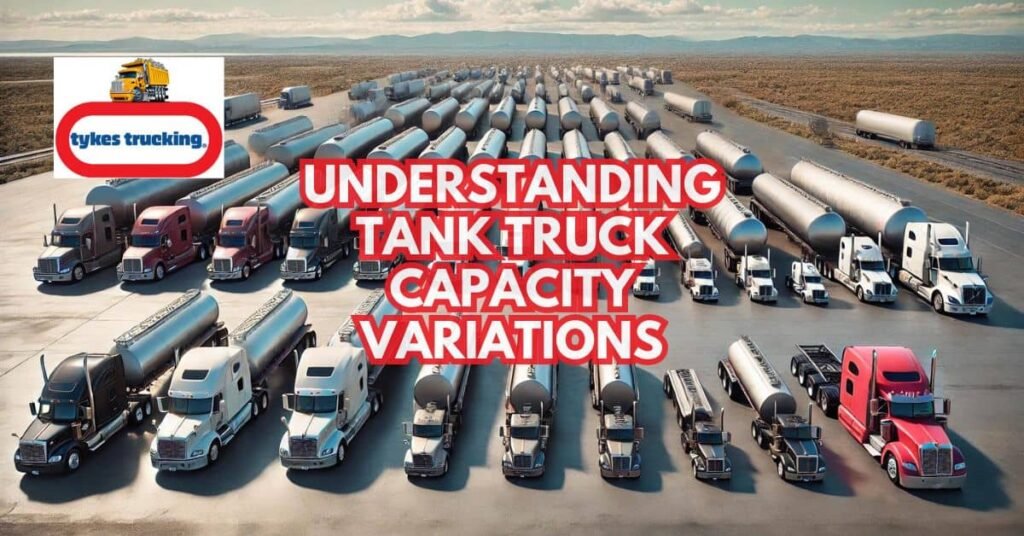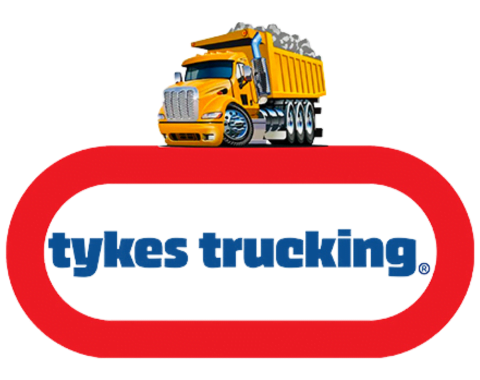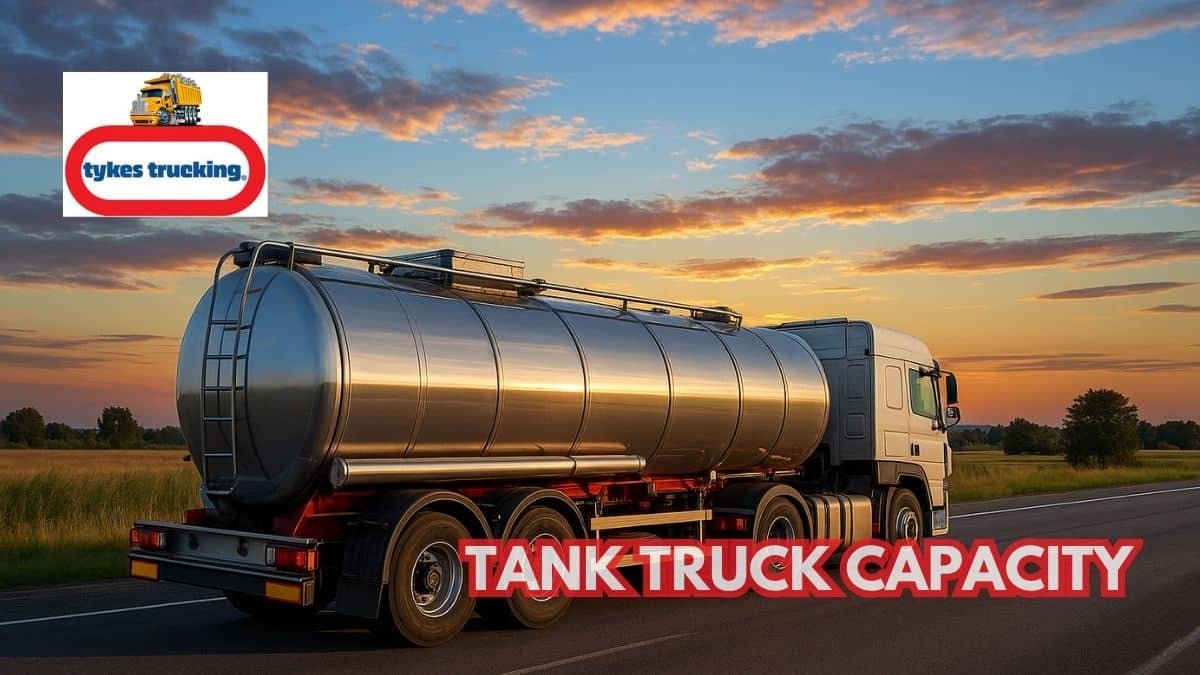Tank truck capacity affects how much liquid can be moved in one trip.
It plays a big role in how fast, safe, and cost-effective transportation is.
Larger tanks allow companies to carry more product with fewer trips.
Smaller tanks may be easier to manage in tight areas but require more trips.
Finding the right size is key to moving fuel and chemicals in a smart way.
1. Reduced Number Of Trips Lowering Transportation Costs
When a tanker truck is built to hold more, it can carry a greater amount of fuel or chemicals in one trip.
This larger load means fewer trips are needed to deliver the same volume.
With fewer trips, companies spend less on fuel, driver pay, and vehicle upkeep.
Using fewer trucks also means less traffic on the road and less wear on public streets.
A tanker truck operating near its maximum capacity helps reduce the number of vehicles needed for transport.
This leads to better use of time, fuel, and labor.
In the long run, businesses save more money by transporting larger loads with fewer trucks.
🚚 Garbage Truck Hopper 101: Everything You Never Knew You Wanted to Know
2. Increased Supply Chain Efficiency In High-Demand Areas
In places where fuel or chemicals are used quickly, big tanks keep the supply steady.
They allow fewer deliveries to cover larger amounts of product.
This supports industries that rely on quick restocking, like factories or gas stations.
It also reduces the chance of delays caused by traffic or driver shortages.
Higher capacity helps meet rising demand without slowing down operations.
🚚 Why Flatbed Truck Towing Is the Safest Option for All Vehicle Types
3. Matching Capacity With Demand, Road, And Storage Limits
Not every delivery site can safely receive a large tanker truck.
Some roads may have weight or height limits that restrict the type of tanker allowed to pass through.
Storage tanks at the delivery location also have their own volume capacity, which means they can only hold a certain amount of liquid.
Choosing a tanker with the correct carrying capacity helps avoid overfilling and spillage.
It is important to select the right type of tanker based on the product, delivery route, and size of the storage tank.
A poor match can cause delays, wasted fuel, or safety risks.
By carefully matching the tanker’s size to each job, companies can transport liquids more safely and efficiently.
🚚 Essential Tools for Your Dump Truck Toolbox
4. Fewer Refueling Stops Enabling Longer Travel Distances
Trucks with larger capacity can be equipped with bigger fuel tanks, allowing them to travel greater distances without stopping.
A large tanker that carries diesel or gasoline can go farther on one tank, which helps when delivering across long routes.
This is especially useful when refueling stations are far apart or hard to access.
Fewer stops during the trip help save time and keep delivery schedules on track.
When companies transport liquid products like diesel or gasoline, longer travel distances make the process faster and more efficient.
Drivers also spend less time idling or waiting at fuel stations.
These savings add up, lowering fuel costs and reducing delays.
Using a large tanker with a full tank improves both speed and reliability on the road.
🚚 Why Delivery of Aggregates in Montalban Is Vital for Infrastructure Projects

5. Compartmentalized Tanks For Safe Multi-Chemical Transport
Some tanker trucks have tanks that are divided into several sections, called compartments.
These compartments help keep different liquids separated during the same delivery trip.
This is important when transporting hazardous materials that could cause harm if they mix.
The inside of each compartment may be made from stainless steel or carbon steel, depending on what kind of liquid it will carry.
Some chemicals need the compartments to insulate heat or cold to stay safe and stable during transport.
Others may need the tank to pressurize the liquid to stop it from changing form.
Baffles are also placed inside the compartments to reduce the movement of the liquids while the truck is in motion.
This makes the ride safer and helps prevent spills or leaks.
Companies can plan better by delivering different chemicals to different locations using one truck.
Compartmentalized tanks make transport safer, cleaner, and more organized.
🚚 Why Choose a Dump Truck With a Crane Over Separate Vehicles for Lifting and Hauling?
6. Lightweight Materials Increasing Payload Within Weight Limits
Using lighter materials to build the tank helps the truck carry more liquid.
These materials may include aluminum or special plastics.
They reduce the truck’s own weight, making more room for cargo.
This is important because roads often have strict weight rules.
A lighter truck can carry more product without breaking those rules.
🚚 How to Create a Successful Dump Truck Business Plan for Beginners
7. Aerodynamic Designs Reducing Fuel Consumption
Some trucks are shaped to reduce air drag while moving.
Rounded tanks and smooth surfaces help the truck use less fuel.
Lower fuel use means lower costs for the company.
It also puts less strain on the engine during long trips.
Aerodynamic designs make each trip more efficient, especially at highway speeds.
🚚 What Are the Must-Have Ideal Truck Accessories for New Owners?
8. Lower Carbon Footprint From Fewer Trips
Larger capacity leads to fewer trips, which lowers total fuel burned.
This means fewer greenhouse gases are released into the air.
It supports cleaner air and better fuel use.
Companies may also meet environmental rules more easily.
Fewer trucks on the road also reduce noise and traffic impact.
🚚 Why Covered Flatbed Trailers Are Essential for Transporting Sensitive Equipment
9. Capacity Tailored To Cargo Properties And Handling Needs
Different types of liquid cargo have different needs during transport.
Some liquids, like petroleum gas, may need special tanks that can handle pressure to keep them in the right form.
Others, such as certain industrial chemicals, might need tanks that protect them from heat or cold.
If the wrong tank is used, the cargo can expand, leak, or cause damage to the truck and the area around it.
Tank trucks must be built with the right materials and size to match each product’s properties.
This includes knowing how much the liquid weighs, how it reacts to temperature, and how it should be stored.
Using the right tank protects both the people handling the cargo and the environment.
🚚 How to Choose the Best Dump Truck for Hire In Montalban for Your Construction Project
10. Balancing Upfront Costs With Per-Unit Transport Savings
Buying a larger tank truck costs more at first.
It also may cost more to maintain.
But it can move more cargo each trip, lowering the cost per gallon or liter moved.
With time, this adds up to big savings.
Companies need to weigh short-term spending against long-term gains.
🚚 Reliable Hauling Services in Marikina City
💡 Conclusion
Tank truck capacity shapes how fuel and chemicals are moved.
The right size can lower costs, improve speed, and support safety.
It also reduces the number of trips and the environmental impact.
Every route, product, and site has different needs.
Picking the best capacity helps companies work smarter and deliver better results.
😉 Our Services
Tykes Trucking Services is here to help with your hauling needs.
We deliver aggregates like sand, gravel, and more, fast and on time.
Whether it’s for a small job or a big project, we’ve got the trucks and team to get it done.
You can reach us at 09175435019, on our Facebook page, or through the contact form on our website.
Choose Tykes for reliable and easy hauling service.

